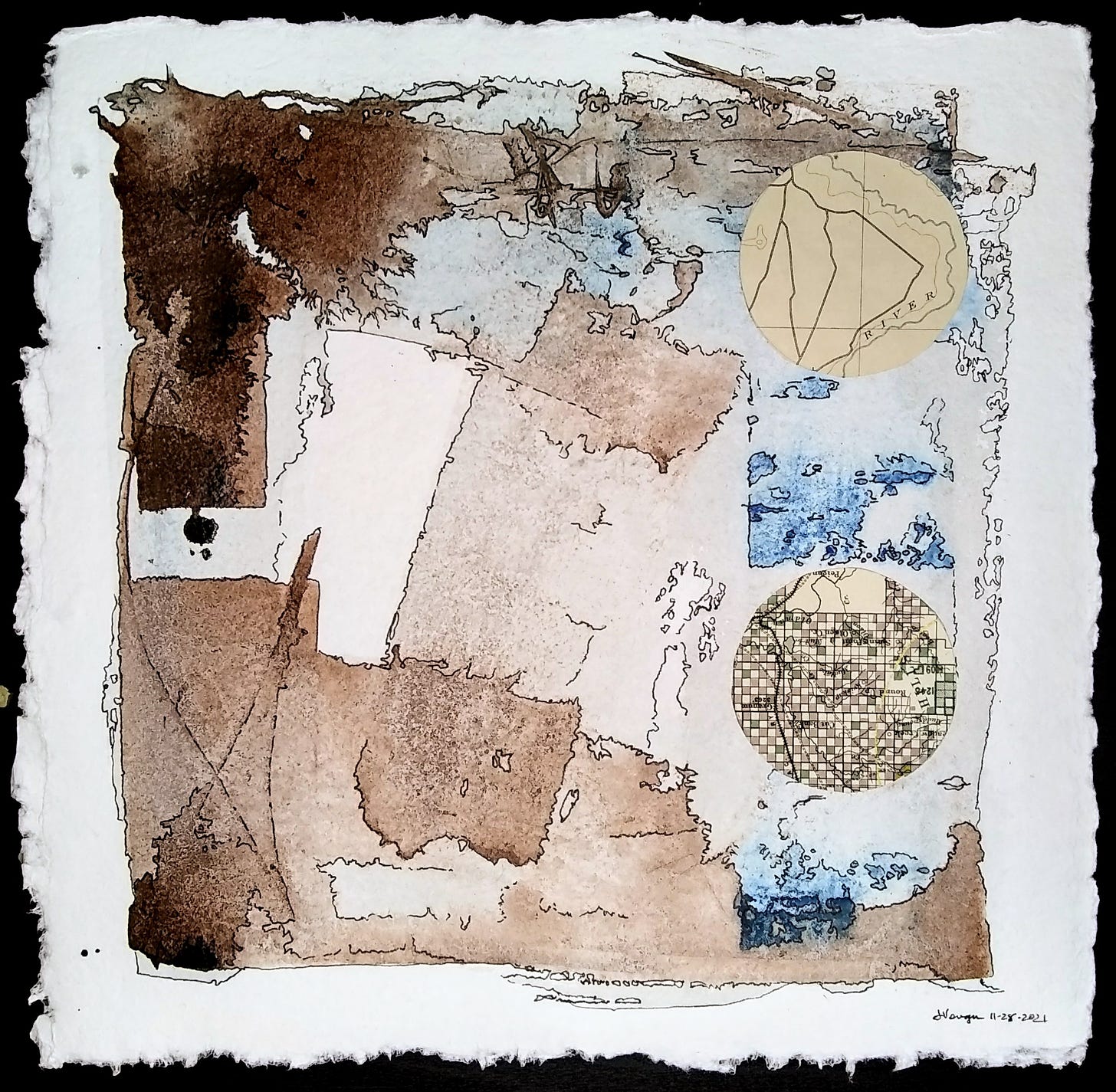12/4/2021 #43
Update (Defoe, plague year), Odell, Powell, Art ("unmapping"), CosmicHoliday's "Plague Year," Monterey Esselen, Khatua, Bialke, Bridges, de Machaut.
UPDATE
Today I picked up Daniel Defoe’s A Journal of the Plague Year at a local public library sale. I thought it would be interesting to read and compare his description of reactions to plague in Europe and London (1664/1665) with our current Covid pandemic (2020/2021). I’ve read Samuel Pepy’s account in Diary and Correspondence of Samuel Pepys; he seemed mostly concerned with how the plague affected the well-to-do. But I agree with some critics that he was an ass; I didn’t like reading about his bumbling sexual predations on housemaids and other women.
For that time, Defoe was unusual in his focus on the working classes, and he was derided for it; he was, after all, the son of a butcher. I learn that he was placed in the stocks and suffered that public humiliation for writing a sarcastic opinion piece that displeased the (Catholic) powers that be; he was also imprisoned for his debts.
In Journal of the Plague Year, Defoe combined factual reporting with fiction. The story is told through the persona of a saddle-maker, struggling to survive in London.
Early in the book, he describes how word of the plague spread, and it makes me think of how information about Covid-19 spread through social media in 2020.
“We had no such thing as printed newspapers in those days to spread rumours and reports of things, and to improve them by the invention of men, as I have lived to see practised since. But such things as these were gathered from the letters of merchants and others who corresponded abroad, and from them was handed about by word of mouth only; so that things did not spread instantly over the whole nation, as they do now. But it seems that the Government had a true account of it, and several councils were held about ways to prevent its coming over; but all was kept very private. Hence it was that this rumour died off again, and people began to forget it as a thing we were very little concerned in, and that we hoped was not true; till the latter end of November or the beginning of December 1664 when two men, said to be Frenchmen, died of the plague in Long Acre, or rather at the upper end of Drury Lane.”
Well, I’ve just started the book, but so far, I’m enjoying it. Defoe would’ve made a great newsletter writer. The video below, by Writer’s Bloc, provides a wonderful, animated summary of Defoe and the book (mild spoiler alert):
Update of a different sort: I intend to post fewer images of my work on Instagram, although I will continue to plug Eulipion Outpost and events. I keep remembering pinay conceptual artist/author Jenny Odell’s idea “to participate in social media, but not as asked” (How to Do Nothing: Resisting the Attention Economy). Honestly, I think her language is very charitable towards those corporate vampires. If you check out her Instagram page (yes, she has one), you’ll see a lot of what I suspect are deliberately boring photos of birds and trees (unusual for an artist), a few plugs of her book, and other books she’s read, but no flashy “stories,” “reels,” or memes. Perhaps this will be my New Year’s resolution: less time on social media, more time involving myself in local projects.
ART
I bought several old maps from the same library sale I mentioned above. After cutting a couple good-sized holes into one map, I realized that it was dated 1904. It’s marked “U.S. Geological Survey” under the directorship of John Wesley Powell—you know—the guy Lake Powell is named after? Powell was the guy who led the first U.S. government expedition down the Colorado river to the Grand Canyon. He died in 1902. Oh, well . . .
LINKS
CosmicHoliday’s tongue-in-cheek video imitation of Daniel Defoe’s Journal of the Plague Year, translated to the Covid-19 pandemic of today.
I said local, and I meant it. Learn more about the Monterey Esselen Tribe. Last year, they once again became stewards of their ancestral homelands in Big Sur.
Artist Digbijayee Khatua is making art about the “existential depths” of cities and borders. His works seem both micro- and macro-cosmic:
Artist/painter Madeleine Bialke’s strangely beautiful paintings feel like that moment of dread in a dream before everything changes.
SOUNDINGS
I started out looking for 16th century European music (to go with Defoe’s “Plague Year”), but somehow ended up with more Texas soul from Leon Bridges. “Steam”:
OK, here you go. Guillaume de Machaut. Medieval music from the time of plague and courtly love (albeit a bit before Defoe’s time):
Thanks for visiting! Until next weekend . . .
My website: JeanVengua.com






